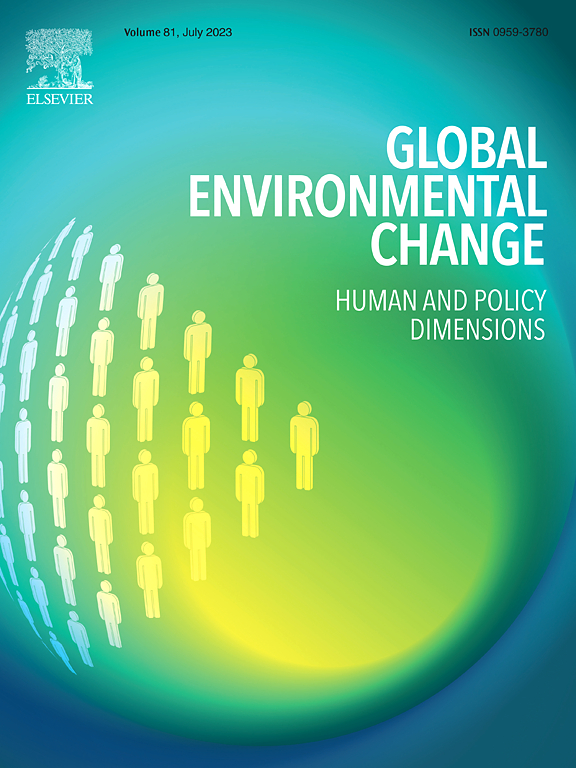Adaptive flood risk management: A decision support system integrating deep learning, digital twins, and economic risk assessment
IF 9.1
1区 环境科学与生态学
Q1 ENVIRONMENTAL SCIENCES
引用次数: 0
Abstract
Floods are among the most destructive climate-related disasters, with their frequency and severity increasing due to climate change and urban expansion. In response to rising claims and insufficient adaptation measures, insurers are progressively withdrawing from high-risk areas, thereby shifting the responsibility for risk management to businesses and municipalities, who must either implement their own solutions or resort to self-insurance. Effective flood risk management requires accurate forecasting, robust financial impact assessments, and decision support systems (DSS) to inform adaptation strategies. Within the framework of the European Union (EU) Floods Directive, this study develops an integrated, AI-powered DSS that combines deep learning-based flood forecasting (ConvLSTM models), economic vulnerability modelling (Joint Research Centre methodology), digital twin simulations, and predictive analytics to support data-driven adaptation planning. The framework was initially applied to assess pluvial, fluvial, and coastal flood risks in the coastal city of Nice, France, and subsequently extended to over 100 public and private sites across three urban municipalities. The findings demonstrate that this methodology improves the accuracy of risk assessments and provides a structured basis for capital allocation, insurability evaluation, and the optimization of adaptation investments. The multi-site deployment revealed significant governance, legal, and behavioural constraints, with public authorities and family-owned businesses responding differently despite comparable risk information. This research shows that integrating AI and digital twin technologies advances the EU Floods Directive’s objectives by enhancing risk mapping, preparedness, and transparency, while supporting public–private partnerships and extending protection to vulnerable populations at risk of losing insurance coverage.
自适应洪水风险管理:集成深度学习、数字孪生和经济风险评估的决策支持系统
洪水是最具破坏性的气候相关灾害之一,由于气候变化和城市扩张,洪水发生的频率和严重程度都在增加。为了应对索赔的增加和适应措施的不足,保险公司正在逐步退出高风险地区,从而将风险管理的责任转移给企业和市政当局,它们必须实施自己的解决方案或诉诸自我保险。有效的洪水风险管理需要准确的预测、稳健的财务影响评估和决策支持系统(DSS)来为适应战略提供信息。在欧盟(EU)洪水指令的框架内,本研究开发了一个集成的人工智能驱动的DSS,该DSS结合了基于深度学习的洪水预报(ConvLSTM模型)、经济脆弱性建模(联合研究中心方法)、数字孪生模拟和预测分析,以支持数据驱动的适应规划。该框架最初用于评估法国尼斯沿海城市的雨洪、河流和沿海洪水风险,随后扩展到三个城市的100多个公共和私人场所。研究结果表明,该方法提高了风险评估的准确性,为资本配置、可保性评估和适应性投资优化提供了结构化的基础。多地点部署显示了重大的治理、法律和行为约束,尽管风险信息相似,但公共当局和家族企业的反应却不同。这项研究表明,人工智能和数字孪生技术的整合通过加强风险测绘、准备和透明度,同时支持公私伙伴关系,并将保护范围扩大到有可能失去保险覆盖的弱势群体,从而推进了欧盟《洪水指令》的目标。
本文章由计算机程序翻译,如有差异,请以英文原文为准。
求助全文
约1分钟内获得全文
求助全文
来源期刊

Global Environmental Change
环境科学-环境科学
CiteScore
18.20
自引率
2.20%
发文量
146
审稿时长
12 months
期刊介绍:
Global Environmental Change is a prestigious international journal that publishes articles of high quality, both theoretically and empirically rigorous. The journal aims to contribute to the understanding of global environmental change from the perspectives of human and policy dimensions. Specifically, it considers global environmental change as the result of processes occurring at the local level, but with wide-ranging impacts on various spatial, temporal, and socio-political scales.
In terms of content, the journal seeks articles with a strong social science component. This includes research that examines the societal drivers and consequences of environmental change, as well as social and policy processes that aim to address these challenges. While the journal covers a broad range of topics, including biodiversity and ecosystem services, climate, coasts, food systems, land use and land cover, oceans, urban areas, and water resources, it also welcomes contributions that investigate the drivers, consequences, and management of other areas affected by environmental change.
Overall, Global Environmental Change encourages research that deepens our understanding of the complex interactions between human activities and the environment, with the goal of informing policy and decision-making.
 求助内容:
求助内容: 应助结果提醒方式:
应助结果提醒方式:


